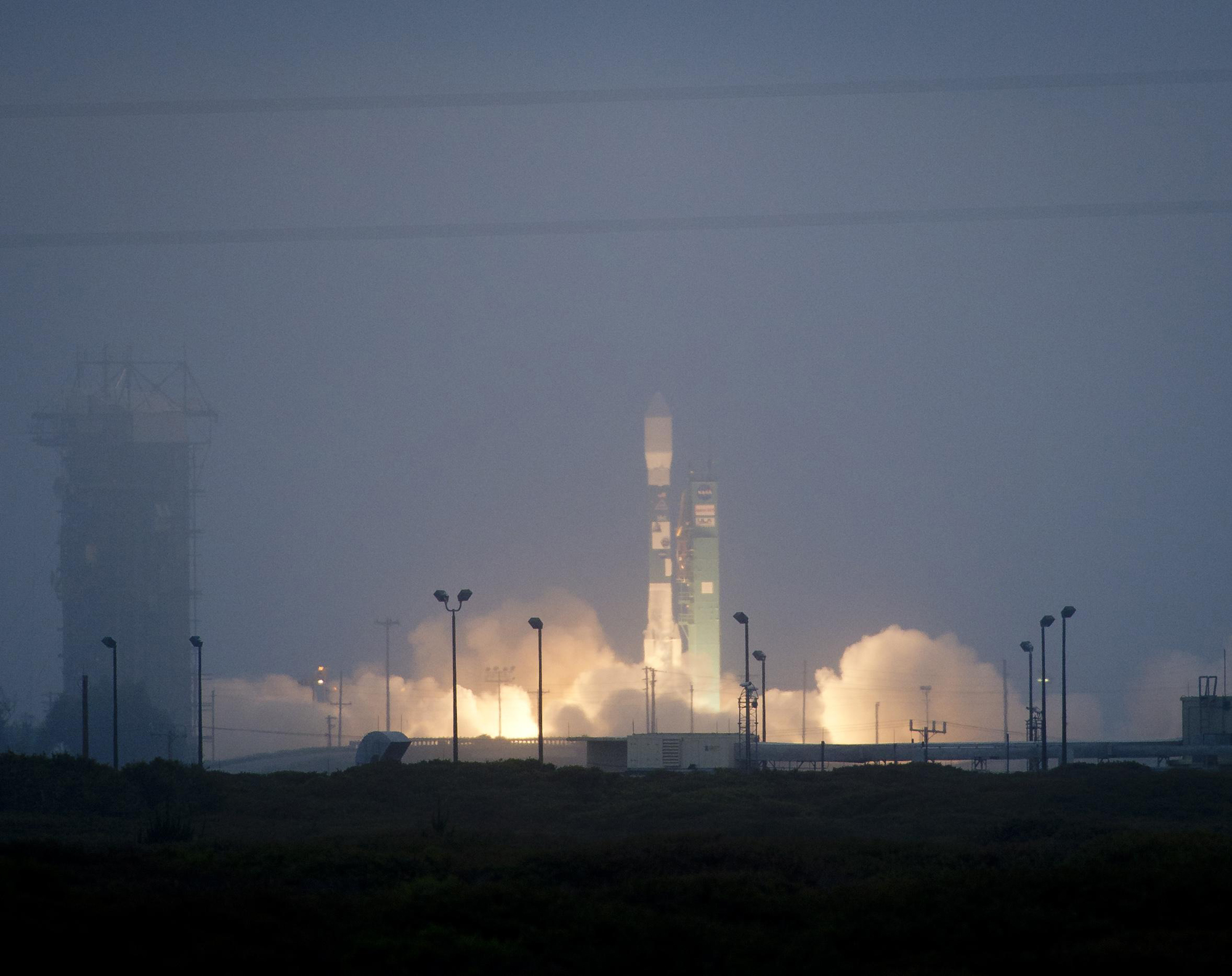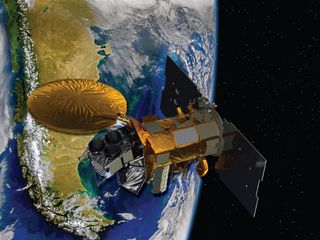
This story was updated at 3:10 p.m. EDT.
NASA launched a new international satellite mission today (June 10) that will measure the ocean's saltiness from hundreds of miles above Earth.
The Aquarius/SAC-D satellite soared into space at 7:20 a.m. PDT (10:20 a.m. EDT) from Vandenberg Air Force Base in California atop an unmanned Delta 2 rocket. The launch was originally scheduled for Thursday morning, but kinks in the rocket's flight software caused a one-day delay.
Once it settles into orbit, NASA's Aquarius instrument will record salt levels in oceans around the world with unprecedented precision for the next three years. This information should help researchers better understand global patterns of precipitation, evaporation and ocean circulation — key drivers of Earth's climate.
"In this mission, NASA is really ready to take an important science and technological leap forward," Gary Lagerloef, Aquarius principal investigator at Earth and Space Research in Seattle, said in a prelaunch briefing Tuesday (June 7). [Video: Blast Off of Sea Salt-Mapping Satellite]
NASA launch director Omar Baez said the launch went extremely smoothly, and that the Aquarius/SAC-D satellite has deployed its solar arrays in orbit. A camera mounted to the satellite's rocket caught views of the spacecraft flying free in space after its successful liftoff.
"So exciting, and the team is jubilant from what I can see," Baez said.
Get the Space.com Newsletter
Breaking space news, the latest updates on rocket launches, skywatching events and more!

Mapping the ocean's salt
After a checkout and commissioning phase that should last about 90 days, the $400 million Aquarius mission will scan Earth's oceans continuously from 408 miles (657 kilometers) up, creating a global salinity map every seven days.
NASA has spent $287 million for its portion of the mission, which is a partnership between the U.S. and Argentina space agencies with the countries of Brazil, Canada, France and Italy also participating.
Aquarius is one of eight scientific payloads aboard the SAC-D spacecraft. The other instruments will observe fires and volcanoes, map sea ice and collect a wide range of other environmental data.
Aquarius is so sensitive that it can detect saltiness differences of just two parts per 1,000 — the equivalent of one-eighth teaspoon of salt in a gallon of water, researchers said. [Video: With Water Cycle Changes, So Goes Salinity]
Even subtle salinity differences can have a big impact on ocean temperature and circulation, which themselves influence Earth's climate. So mapping out ocean saltiness precisely should help scientists come up with better climate models, researchers said.
The Aquarius/SAC-D mission joins 13 other NASA satellite missions dedicated to studying Earth from above. But its salt-measuring skills will bring a new capability to the fleet.
"The addition of Aquarius to this suite of instruments helps create a more complete picture of our oceans and the impact on the Earth's climate," said Eric Ianson, program executive with NASA's Science Mission Directorate in Washington, D.C.
Good news from the launch pad
Today's successful liftoff came as a relief for NASA, which recently lost two Earth-observing satellites to launch failures. In 2009, the $273 million Orbiting Carbon Observatory crashed into the ocean near Antarctica. And in March of this year, the $424 million Glory climate satellite plunged into the Pacific.
"It's a risky business. So many things can go wrong, and sometimes they do," said Chuck Gay, deputy associate administrator for NASA's Science Mission Directorate in Washington, D.C. "No one was really, really comfortable until we saw the separation of the SAC-D/Aquarius from the launch vehicle, saw the solar arrays open up and got telemetry from the spacecraft saying that we had positive power."
For Michael Freilich, director of NASA's Earth Science Division, the joy and relief manifested as hunger.
"It's been a couple of years since I have wanted to eat after a launch," Freilich said. "And I wanted to eat this morning after the launch."
Both of the failed launches used Taurus rockets, provided by the Virginia-based Orbital Sciences Corp. In both cases, the rocket's nose-cone fairing — a shell-like covering that protects its satellite payload — failed to open as designed.
Those two failures played no part in going with United Launch Alliance for Aquarius/SAC-D. The decision to use a Delta 2 was made about nine years ago, researchers said.
The Aquarius/SAC-D mission is a collaboration between NASA and Argentina's space agency, Comision Nacional de Actividades Espaciales (CONAE). CONAE built SAC-D, which stands for Satélite de Aplicaciones Científicas-D.
"This is obviously a great day — a great day for Argentina and CONAE, a great day for the U.S. and NASA and a great day for all of our other international collaborators on this mission," Freilich said. "And it's a great day for science."
You can follow SPACE.com senior writer Mike Wall on Twitter: @michaeldwall. Follow SPACE.com for the latest in space science and exploration news on Twitter @Spacedotcom and on Facebook.
Join our Space Forums to keep talking space on the latest missions, night sky and more! And if you have a news tip, correction or comment, let us know at: community@space.com.

Michael Wall is a Senior Space Writer with Space.com and joined the team in 2010. He primarily covers exoplanets, spaceflight and military space, but has been known to dabble in the space art beat. His book about the search for alien life, "Out There," was published on Nov. 13, 2018. Before becoming a science writer, Michael worked as a herpetologist and wildlife biologist. He has a Ph.D. in evolutionary biology from the University of Sydney, Australia, a bachelor's degree from the University of Arizona, and a graduate certificate in science writing from the University of California, Santa Cruz. To find out what his latest project is, you can follow Michael on Twitter.
Most Popular

